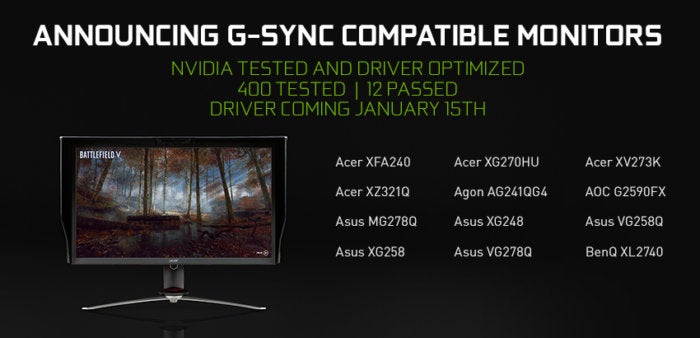Ansatsu
Power Member
Novos drivers já estão disponíveis com suporte para Adaptive Sync (freesync).
- If you are in the 12 monitor list, Adaptive Sync should be automatically enabled
- If you monitor supports Adaptive Sync but not in the list, remember to manually enable it in NVCP
- HDMI is not supported! Only Display Port will work at this time.
- 10 series and 20 series GPU are the only ones that are supported for now.
- It might work, it might work a little, it might have bugs or straight up not work at all - This is only the beginning after all. Remember to leave your feedback to Nvidia through various channels, whether it is in here, on Geforce forums or Support.
HOW TO ENABLE ADAPTIVE SYNC;
First, make sure you meet all of these qualifications;
ONCE YOU MEET ALL OF THESE PREREQUISITES...
- Own a 10xx or 20xx series Nvidia GPU. 9xx series or anything older, at the time of writing, does not work. There is currently no workaround.
- Own a Freesync compatible monitor -- this does not have to be on the list of 'Nvidia Certified' ones, it just has to support Freesync.
- Your Freesync monitor has to have DisplayPort 1.2/1.4. **Any HDMI implementation of Freesync will not work at this time, even if the monitor does technically support Freesync.
- Install driver 417.71. At the time of writing, this is the only driver to support Freesync monitors working with Nvidia cards.
NOTE: G-SYNC WILL NOT BE WORKING YET.
- Turn Freesync ON in the monitor settings
- Let the monitor disconnect and reconnect
- Taskbar > Right Click > Nvidia Control Panel > Global Settings > Monitor Technology > Gsync Compatible -- Hit Apply. Monitor should disconnect and reconnect as if you were doing a driver update.
- If your monitor is over 60hz (it likely is) you will have to go into Change Resolution > Select your monitor -- change it back to 144hz.
WHQL Link to driver
- In the Nvidia Control Panel, Go to Display > Set Up G-Sync
- Under "1. Apply Following Changes" Choose to enable in Full Screen or Windowed & Full Screen Mode (user choice, I currently am testing with windowed + full screen)
- Under "2. Select the display you would like to change" Select the panel(s) you want to apply this to. The Panel you are selecting should resemble this, with the G-sync logo on it.
- Under "3. Display Specific Settings," check "Enable settings for the selected display model."
- Go to the bottom right, click apply. Monitor should disconnect and reconnect, just like you did a driver update.
Última edição:




